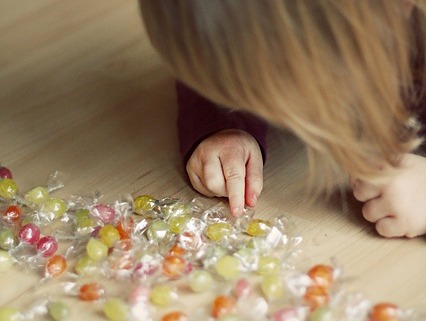As easy as 1, 2, 3: mathematics for pre-schoolers
We all know that we should be reading to our children from an early age in order to foster literacy and grow a life-long love of the written word in our children. But numeracy and a life-long love of mathematics is arguably just as crucial to our children’s later success. In fact, as digital natives, living in the information technology era, numeracy will only be more important for our children than it was for generations gone by. So, how can parents of preschool children give them the best start in terms of numeracy? What is the mathematical equivalent of regular story time?
Keep it concrete. Firstly, don’t be tempted to extend preschool children into the world of abstract maths. Instead, keep maths concrete. What does keeping maths concrete mean? It means doing maths physically with actual things that your child can see and touch. For example, when counting, count actual things and count them physically, pointing to each thing as you do so. The ability to do maths in the abstract (e.g. 6 + 6 = 12) grows out of the solid foundation of being able to do maths in the concrete. You shouldn’t ask a pre-schooler to do abstract maths any more than you should pass them a book and ask them to read it silently. In fact, even when your child begins to perform maths in the abstract, you should always give your child the option to return to the concrete. Making a maths problem concrete is a valid and useful strategy for children and adults and should never be associated with shame or a sense of failure.
Count. From birth, whenever you need to count, count aloud. As your baby grows into a toddler, ask them to count with you. And as they gain confidence, ask them to count. ‘How many are there?’ Encourage your child to point to each thing as they count and ensure that they don’t skip over or accidentally count two numbers for one thing. Point out mistakes in a gentle and matter of fact way, encouraging them to try again. Ask your child to assign cups or food or toys to people or stuffed animals so that everybody gets one. When all of that is mastered, experiment with counting backwards or with counting starting at a number other than one.
Use mathematical language. Play with the real world language of numeracy in your everyday life. The language of size (bigger, heavier, wider), of distance (near, far, beside, under, next to), of time (day, week, year), of geometry (square, circle, line) and of data (more than, compare, sometimes). ‘You’ve got two cat toys, which is biggest?’ ‘I’m going to draw a shape. Is that a circle or a square?’
Add operations. When your child has mastered counting, introduce mathematical operations into everyday activities. Always keep it concrete and encourage your child to count to find the answer. Start with addition. ‘Look, you have two red beads and two blue beads, how many beads is that altogether?’ Move to subtraction. ‘You had three sultanas and then you ate one, how many are left?’ You can begin to experiment with multiplication and division by asking your child to assign food or toys to people or stuffed animals so that everybody gets even amounts. ‘How many people are there? How many sultanas are there altogether? And how many did each of us get?’
Sort and create patterns. Start with sorting. Using coloured beads, pegs, patty papers or cards, sort into categories. ‘Let’s sort your beads, so all the green beads and in this pile and all the orange beads are in this pile.’ When sorting is mastered you can experiment with patterns. ‘I’m going to make a pattern- green bead, then orange bead, then green bead, then orange bead, then green bead. What comes next?’
Measuring. Take the time to show your child when you measure in everyday life. If you are baking a cake, talk through needing one and a half cups of flour and get your child to help measure it out. Show your child how a tape measure works and measure their toys together. Measure your child and let them enjoy knowing that they have grown! Ensure there’s a simple and easy to read analogue clock in the house and regularly tell the time from that, explaining to your child how you read the time.
Play with maths. Maths is easy to find in all kinds of games. It is easy to play with maths when playing with tea sets, or playing shops, or playing in the sand pit or playing games with dice. So notice the maths in the games your child plays and take the opportunity to play with specific concepts.
Keep it fun. Don’t ever push it. If your child isn’t interested then let it go for now. There will be more opportunities tomorrow. If your child is struggling then make sure you’ve made the problem concrete for them. If your child is still struggling then work it out together. See if you can find the fun in numeracy too.
Apply it in your life: How do you encourage your child’s developing numeracy?






Leave a Reply
Want to join the discussion?Feel free to contribute!